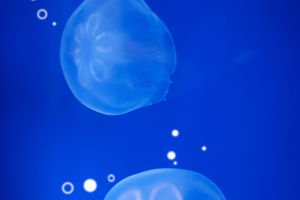Tropical ornamental fish is one of the most beautiful and fascinating creatures in the world.
With a diverse range of colors, shapes, and sizes, these captivating creatures have garnered popularity among aquarium enthusiasts worldwide, making them sought-after pets.
1. Biology of Tropical Ornamental Fish
Tropical ornamental fish, also known as aquarium fish, are a diverse group of fish that are native to tropical regions around the world.
They come from a variety of families, including cichlids, tetras, angelfish, gouramis, and many more. These fish are typically small in size, ranging from less than an inch to several inches in length.
2. The Behavior of Tropical Ornamental Fish
Tropical ornamental fish are known for their unique behaviors and interactions with their environment.
They are often social creatures and will interact with other fishes in their aquarium.
Some species of tropical fish are known to form monogamous pairs and will mate for life.
Tropical fish are also known for their intricate courtship displays. For example, a male angelfish will dance to attract a female, while male guppies will exhibit their colorful fins to attract a mate.
Some tropical fishes are also known to engage in cooperative breeding, where multiple individuals will care for the offspring of a single pair.
3. Ecological Significance of Tropical Ornamental Fish
Tropical ornamental fishes play an important ecological role in their native habitats.
Many species of these fish are important food sources for larger predators, such as birds and big fish. They also help to control the populations of smaller organisms, such as insects and plankton.
The demand for tropical ornamental fish has also advanced the development of commercial fish farming operations in many countries.
These operations have helped to reduce the pressure on wild fish populations and have provided economic opportunities for local communities.
However, the trade in tropical ornamental fish has also brought negative impacts on the environment.
The collection of wild fish can lead to overfishing and damage to sensitive ecosystems such as coral reefs.
The utilization of chemicals and antibiotics in fish farms can have detrimental effects on the environment, potentially causing negative impacts.
4. Conclusion
Tropical ornamental fishes are fascinating creatures that have captured the attention of aquarium enthusiasts worldwide.
They come in a wide variety of shapes, sizes, and colors and are known for their unique behaviors and interactions with their environment. However, it is crucial to be mindful of the environmental impacts associated with the trade in these fish.
With proper management and conservation efforts, we can ensure that these beautiful creatures will continue to thrive in their natural habitats and aquariums for generations to come.


